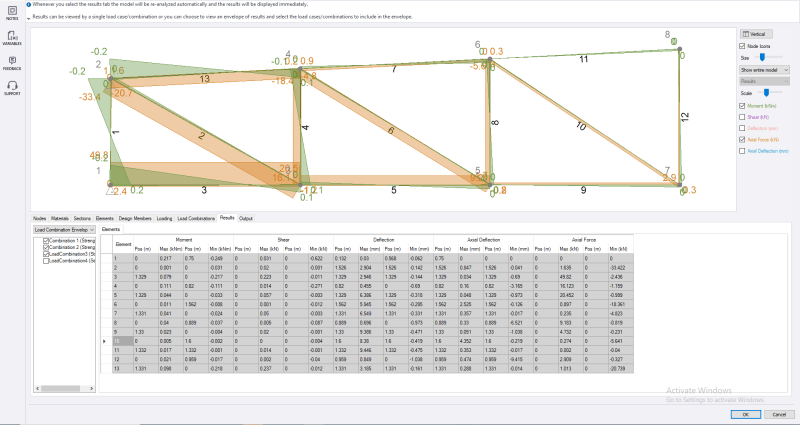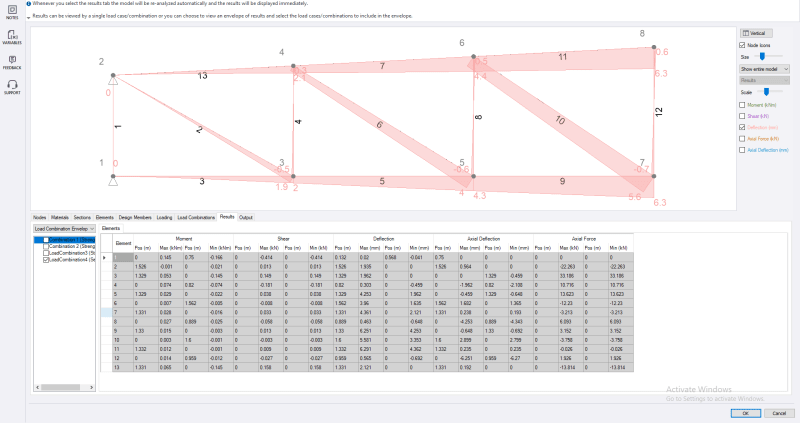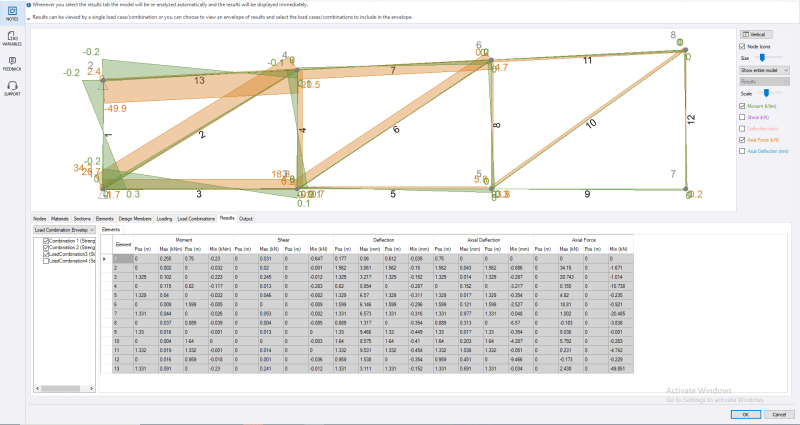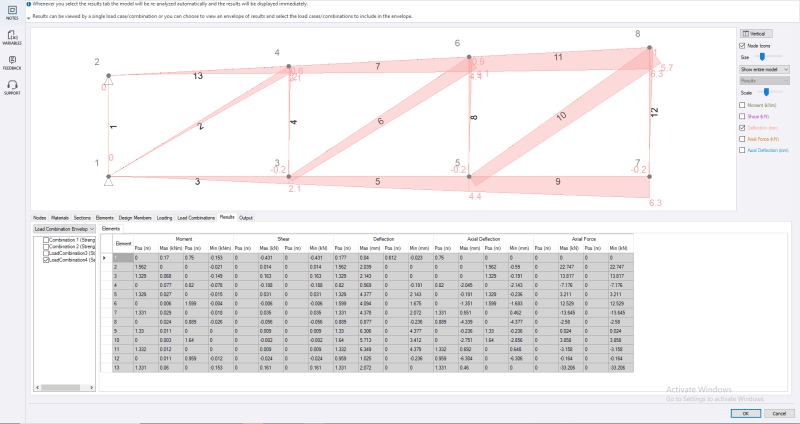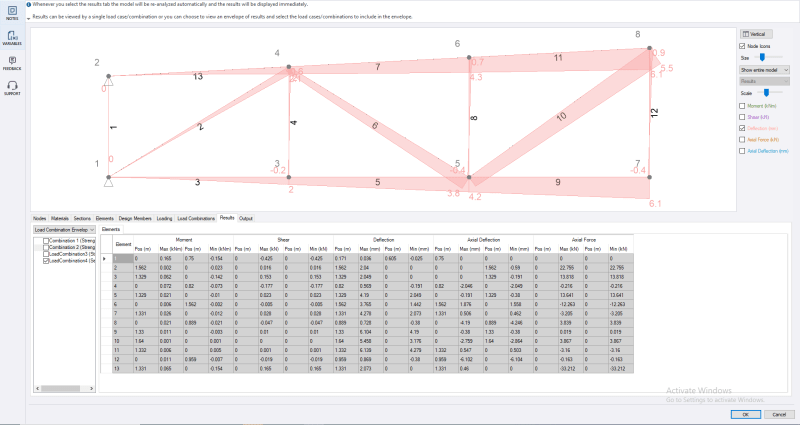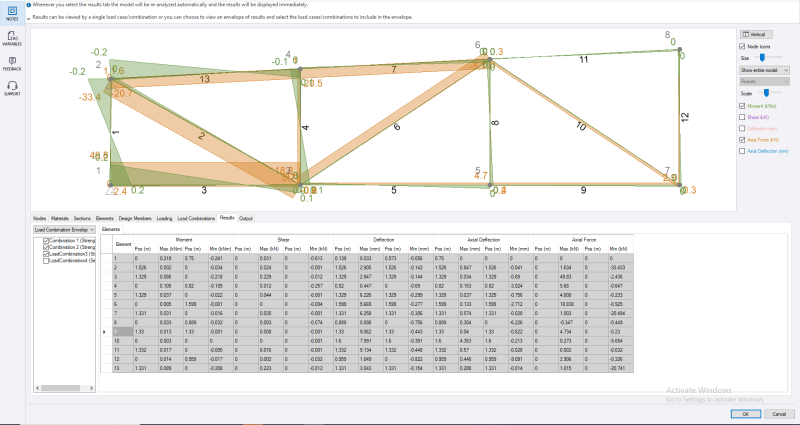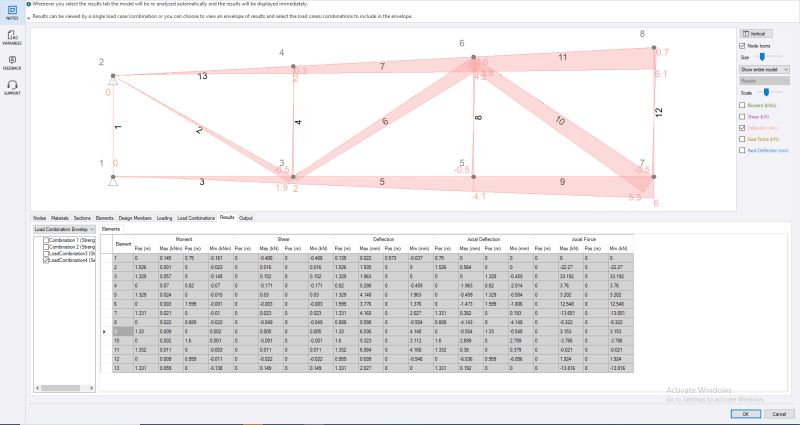@Littlewheels,
Going by that then my go to assembly is no. 3, to ensure biggest axial force is tensile. Element material is steel hollow sections as below
@BAretired
Well, I thought the photos would be clearer. First photo is moment (green) and axial (beige) element forces, second in pink is deflection
Its a 4m cantilever, steel R.H.S 60x40x3mm external elements and 40x40x3mm internal elements. Sloped top chord, roof pitch angle, gutter on the left. Assume the loading is 1 unit per node
The question is really on whether there are better truss types / element assembly methods that the ones tried above. I should remove those tables as they are just distracting from my question

